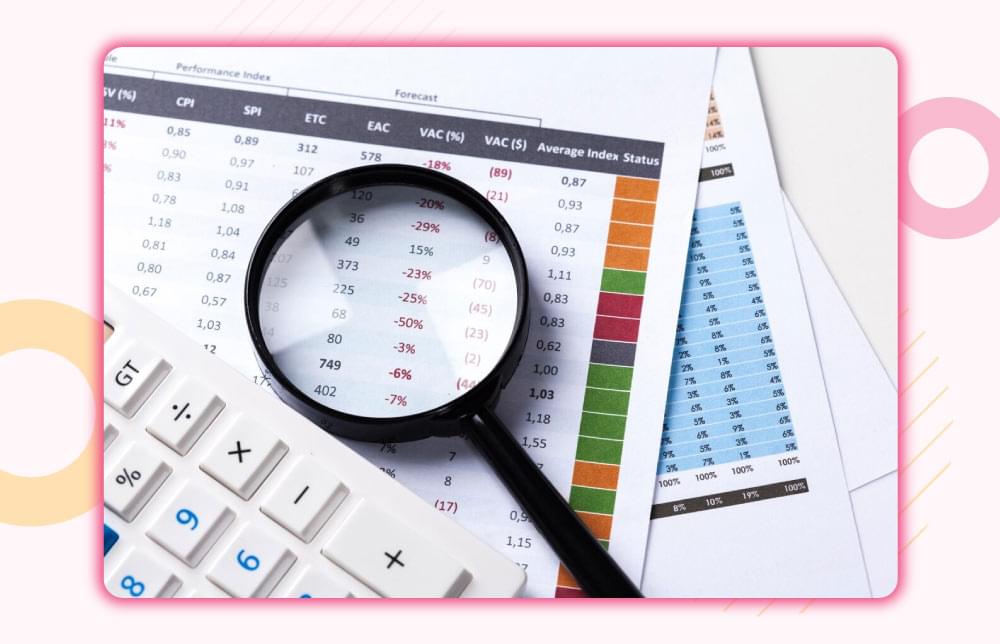
What is Annual Contract Value (ACV) & How to Calculate It?

Having sustainable financial growth is definitely of utmost importance in any type of business and organization. But have you ever wondered what’s the actual financial value of such contracts? This is where Annual Contract Value (ACV) comes into play!
ACV is one of the most important metrics of a business that helps you evaluate the real quality of your relationships with customers. Moreover, it helps subscription-based businesses reduce churn.
In order to fully benefit from ACV, you have to learn its importance and calculation methods in different scenarios. So, let’s go through all the key aspects of ACV in detail, starting with some basics.
Table of Contents
- What is Annual Contract Value (ACV)?
- Importance of ACV
- How to Calculate ACV? (+ Examples)
- Best Practices of ACV Calculation
- What is ARR, and How is it Different from ACV?
- Who Needs to Use ACV?
- Common Annual Contract Values of Different Industries
- Conclusion
- FAQs
What is Annual Contract Value (ACV)?
Annual Contract Value, commonly referred to as ACV, is a vital financial metric. It represents the annualized revenue value of a customer’s subscription contract. In simpler words, ACV measures how much recurring revenue a single customer contract generates for a business over a one-year period.

Understanding the Meaning of ACV
The primary goal of ACV is to help businesses understand a very basic question: “What is the annual monetary value of their customer relationships?”
Instead of catering to one-time purchases or infrequent transactions, ACV focuses on the predictable, recurring revenue that forms the backbone of any subscription-based business. This is the reason why ACV is critical for SaaS companies.
Nevertheless, you should not make the mistake of assuming that ACV is limited to SaaS companies. It is, in fact, an important metric for all types of businesses that want to understand their financials in a better way.
Overall, ACV provides you with a standardized and annual perspective on the customer value instead of handling varying contract lengths and payment schedules.
What ACV Includes (and What It Doesn’t)?
ACV typically includes:
- Monthly subscription fees (annualized)
- Annual subscription payments
- Recurring service charges
- The yearly portion of multi-year agreements
- Regular maintenance fees
On the flip side, ACV typically does not include the following:
- One-time implementation fees
- Setup costs
- Non-recurring professional services
- Training expenses
- Hardware purchases
The key inclusions and exclusions of ACV make it useful for businesses that want to build a stable and predictable income stream while combating churn.
Related: Why Customer Retention Should be a Priority for Every Business?
Importance of ACV
Now that you know what exactly annual contract value is, you need to know that understanding it is much more than just tracking a financial metric. It is, in fact, a way of getting strategic insights into the workings of your business.
ACT is a reliable referendum on customer relationships, sales performance, and overall business health.
Following are the key areas in which ACV is important:
1. Strategic Business Planning
ACV plays a vital role in accurate financial forecasting and strategic planning. By evaluating the annual value of your contracts, you can:
- Make more informed budgeting decisions based on predictable revenue streams
- Set realistic growth targets
- Allocate resources more effectively across departments
- Plan expansion initiatives with greater confidence
- Adjust pricing strategies based on contract value patterns
Overall, ACV provides financial clarity that any business, especially new ones, needs to make smart decisions.
2. Sales Team Optimization
ACV also has a direct impact on the way you evaluate and motivate your sales team in the following ways:
- Instead of simply simply counting the number of closed deals, ACV helps you assess the quality and value of each sale.
- You can structure commission plans that reward securing higher-value contracts, encouraging sales teams to focus on quality relationships rather than quantity.
- ACV data helps sales leaders identify which packages and sales strategies yield the most valuable contracts.
- You can identify successful approaches and incorporate them into your training programs.
3. Customer Relationship Prioritization
In an ideal world, every customer would receive VIP treatment. In reality, businesses have to make tough decisions about resource allocation:
- Higher ACV accounts typically require more personalized attention and proactive support to prevent churn.
- As contracts approach renewal, ACV helps teams prioritize which relationships deserve additional investment in retention efforts.
- ACV analysis can reveal which customers have the potential for significant expansion.
It is important to note that such customer prioritization does not mean neglecting lower-value customers. Instead, it is a smart strategy to ensure your most valuable customers are getting the attention they need to ensure contract maintenance and sustainable growth.
4. Churn Prevention
ACV provides reliable insights for business sustainability and also helps businesses prevent or reduce churn:
- Declining ACV signals satisfaction issues that could lead to churn.
- You can ACV to customer acquisition costs (CAC) to ensure your business model remains profitable.
- Stable or growing ACV indicates your product is delivering continuous value to the customers.
- Strong ACV metrics also demonstrate excellent business health.
5. Competitive Positioning
ACV helps you understand where you stand in the market:
- Benchmark your ACV against industry averages to assess your pricing strategy
- Identify opportunities to target underserved segments
- Develop competitive advantages by targeting specific contract value ranges
- Structure offerings to maximize annual value rather than short-term gains
Overall, regular tracking and analysis of ACV trends help businesses get invaluable insights into their financial workings and help shape long-term strategic direction.
How to Calculate ACV? (+ Examples)
You might think that calculating ACV is a difficult task at first. In reality, it is quite easy once you get familiar with the basic formula and how to use it in different situations.
Let’s explore the ACV calculation process, along with some examples of varying situations.
Fundamental ACV Formula
At its most fundamental level, ACV is calculated using the following formula:
ACV = Total Contract Value / Number of Years in Contract
The result of applying this formula is the annualized value of a customer contract. This value is obtained regardless of its duration or varying payment structure.
Single Contract Calculation Examples
Example 1: Multi-Year Contract
Let’s take the example of a company that signs a new customer to a 3-year SaaS subscription costing $120,000 in total.
ACV = $120,000 / 3 years = $40,000 per year
This means this customer relationship is worth $40,000 annually to the company.
Example 2: Monthly Subscription Contract
If a company has a monthly billing system, it will need to convert it into annual terms. For instance, if a customer is paying $750 per month for 2 years, you can calculate the annual subscription rate by:
Annual Rate = $750 × 12 months = $9,000 per year
Then, determine the total contract value:
Total Contract Value = $9,000 × 2 years = $18,000
Now, you can easily calculate ACV:
ACV = $18,000 / 2 years = $9,000 per year
Example 3: Contract with One-Time Fees
Many customer subscriptions and contracts, especially in the SaaS industry, also have one-time fees. Therefore, it is important to consider these charges in the implementation and calculation of ACV.
One such scenario is if a customer signs a 2-year contract worth $50,000 per year with a one-time fee of $5,000:
ACV = ($50,000 × 2) / 2 = $50,000 per year
You can also include the one-time fee as follows:
ACV = ($50,000 × 2 + $5,000) / 2 = $52,500 per year
Calculating Average ACV Across Multiple Contracts
It is also possible that you might want to calculate the average ACV across all customers to analyze your overall business performance. In such a situation, you can use the following formula:
Average ACV = Total ACV of All Contracts / Number of Contracts
Example: Portfolio of Contracts
Imagine your company has the following customer contracts:
- 3 startups: 1-year contracts at $15,000 each
- 2 mid-market companies: 2-year contracts at $40,000 per year each
- 1 enterprise client: 3-year contract at $100,000 per year
Step 1: Calculate the ACV of each contract
- Startup ACV: $15,000 per contract × 3 contracts = $45,000
- Mid-market ACV: $40,000 per contract × 2 contracts = $80,000
- Enterprise ACV: $100,000 × 1 contract = $100,000
Step 2: Calculate the total ACV: Total ACV = $45,000 + $80,000 + $100,000 = $225,000
Step 3: Calculate the average ACV: Average ACV = $225,000 / 6 contracts = $37,500 per contract
It means in the above example, each customer is worth $37.500 annually.
Best Practices of ACV Calculation
Now that you are an expert in ACV calculation, you need to be mindful of the following things during this process:
- Be consistent in your calculation method, especially regarding one-time fees
- Document your methodology to ensure all relevant departments and team members are familiar with your ACV figures.
- Track ACV trends over time instead of focusing solely on absolute numbers
- Break down your ACV data into different categories, including customer size, industry, and acquisition channel.
- Combine ACV with other metrics like Customer Acquisition Cost (CAC) for a complete picture
Related: The Role of Customer Service in Retaining Customers Best Practices and Case Studies
What is ARR, and How is it Different from ACV?
Other than knowing what ACV is and its calculation methods, it is also important to know how ACV is different from other financial metrics like ARR.
ARR stands for Annual Recurring Revenue. It is also an important metric to analyze the financial health of a subscription-based business. ARR represents the predictable, recurring revenue components of your subscription business normalized to a one-year period.
In other words, ARR is the total value of your recurring revenue streams that you can reasonably expect to continue year after year.
ARR is calculated as:
ARR = (Value of all active annual subscriptions) + (Monthly subscriptions × 12) - Revenue lost to churn
Unlike ACV, which focuses on the average value of individual contracts, ARR provides a comprehensive view of your entire recurring revenue base at any given moment. It’s essentially a snapshot of your business’s guaranteed revenue run rate.
Key Differences Between ACV and ARR
The following table summarizes the differences between ACV and ARR:
| Aspect | Annual Contract Value (ACV) | Annual Recurring Revenue (ARR) |
|---|---|---|
| Focus | Individual contract or average across contracts | Company-wide recurring revenue |
| Purpose | Evaluate average deal size | Evaluate overall business scale |
| Time perspective | Contract-focused (average on an annual basis) | Current annualized run rate |
| Contract requirements | Can include contracts of any length | Typically includes only contracts of 12+ months |
| One-time fees | May or may not be included | Excludes all one-time fees |
When to Use ACV vs. ARR
Use ACV when you need to:
- Evaluate the performance of the sales team in securing valuable contracts
- Compare the quality of deals across different segments or time periods
- Assess the effect of different pricing on contract values
- Allocate resources for customer success teams
- Calculate customer acquisition cost (CAC) payback periods
Use ARR when you need to:
- Report overall business growth to relevant stakeholders, including investors
- Predict long-term revenue and make strategic investments
- Track year-over-year increase of your revenue base
- Evaluate the financial impact of churn and account expansion
- Evaluate the overall health of your subscription business model
Practical Example: ACV vs. ARR
Let’s understand the difference between ACV and ARR with an example:
A software company has the following customer contracts:
- 5 customers on 2-year contracts at $12,000/year ($24,000 total per contract)
- 10 customers on annual contracts at $6,000/year
- 20 customers on monthly plans at $400/month ($4,800/year each)
ACV Calculation: Total Contract Value = (5 × $24,000) + (10 × $6,000) + (20 × $4,800) = $246,000 Number of Contracts = 5 + 10 + 20 = 35 ACV = $246,000 ÷ 35 = $7,029 per contract
ARR Calculation: ARR = (5 × $12,000) + (10 × $6,000) + (20 × $4,800) = $156,000
The above calculation shows that the company’s average contract size is $7,029, while its current recurring revenue run rate is $156,000.
Importance of ACV and ARR in Reducing Churn
ACV and ARR are both important in reducing churn in the following ways:
- ACV trends can show whether you’re attracting higher-value customers over time or if your contracts are becoming less valuable. It also shows potential product-market fit issues.
- ARR growth rate shows the overall health of your recurring revenue base and the combined impact of new sales, expansions, and churn.
- ARR churn rate (percentage of ARR lost in a period) provides a direct measurement of the revenue you are losing.
- Increasing ARR from existing customers compared to ACV can indicate successful upselling and cross-selling.
Overall, tracking ACV and ARR gives you a complete picture of your subscription business because ACV shows the quality of individual customer relationships, while ARR demonstrates your overall financial momentum.
Who Needs to Use ACV?
One of the most common myths about ACV is that it is only for SaaS companies. However, it is actually a quite versatile metric that can provide useful information across multiple industries in which recurring revenue plays an important role.

Following are some of the many industries that can benefit from ACV calculation:
- Software as a Service (SaaS) Companies: ACV is essential for SaaS businesses. It helps all the teams in identifying high-value prospects and ensuring long-term growth.
- Subscription Retail: Retailers with recurring revenue models use ACV to understand customer value in addition to traditional metrics like average order value.
- Financial Services: Financial institutions track ACV for wealth management services, premium account packages, and B2B financial products. This helps them understand the long-term value of different client segments.
- Telecommunications: Telecom providers use ACV to evaluate corporate contracts and consumer service bundles. By understanding which packages and features drive higher contract values, they can refine their packages to maximize revenue per customer.
- Media and Content Providers: Streaming services, content platforms, and digital publishers monitor ACV to understand the relative value of different subscription tiers and content schemes.
Other than the industries, there are different key stakeholders that use ACV to understand a business:
- Sales Leadership: Sales executives use ACV to set meaningful revenue targets beyond simple deal counts.
- Customer Success Teams: Customer success managers often use ACV to prioritize retention efforts for high-value accounts.
- Finance Department: Financial leaders use ACV to create more accurate revenue forecasts.
- Product Management: Product teams benefit from ACV insights to prioritize features that drive higher contract values.
By integrating ACV analysis into your business processes, you create alignment across departments around the goal of building valuable, long-term customer relationships.

Common Annual Contract Values of Different Industries
Knowing the common ACV ranges across different industries can help you evaluate your own business performance. The following table summarizes these average values:
| Industry | Segment | Typical ACV Range |
|---|---|---|
| SaaS Companies | B2C Applications | $100 - $500 |
| SMB Solutions | $5,000 - $25,000 | |
| Mid-Market Solutions | $25,000 - $100,000 | |
| Enterprise Solutions | $100,000 - $250,000+ | |
| Industry-Specific Platforms | $50,000 - $500,000+ | |
| Subscription Retail | Consumer Subscription Boxes | $150 - $600 |
| Premium/Luxury Goods | $1,200 - $5,000 | |
| B2B Office Supplies | $2,000 - $10,000 | |
| Corporate Gift Programs | $5,000 - $20,000 | |
| Financial Services | Mass Affluent Wealth Management | $2,500 - $10,000 |
| Premium Banking Services | $500 - $2,000 | |
| Business Banking | $5,000 - $25,000 | |
| Corporate Treasury Services | $50,000 - $250,000 | |
| Institutional Financial Platforms | $500,000+ | |
| Telecommunications | Consumer Bundles | $1,000 - $2,400 |
| Small Business Packages | $3,600 - $12,000 | |
| Mid-sized Business Solutions | $15,000 - $50,000 | |
| Enterprise Contracts | $100,000 - $1,000,000+ | |
| Media & Content | Consumer Streaming | $120 - $240 |
| Professional Information Services | $1,000 - $5,000 | |
| Industry-Specific Content | $5,000 - $20,000 | |
| Enterprise Media Licensing | $50,000 - $250,000 |
Remember that these ranges represent industry averages and can vary significantly based on factors such as:
- Geographic market (e.g., North American markets typically support higher ACVs)
- Solution maturity and competition
- Customer size
- A variety of features and services included
- Contract length (multi-year commitments may involve discounts)
Related: B2B SaaS Benchmarks: A Complete Guide
Conclusion
The bottom line is that Annual Contract Value is much more than just tracking numbers. It is also about getting critical insights that help you make strategic business decisions. By mastering the process of calculating and analyzing ACV, you can get to understand customer relationships, evaluate sales performance, and ultimately build a more profitable and sustainable business.
As you implement churn reduction strategies with platforms like Churnfree, let ACV be your guide for where to allocate your resources and when to intervene with at-risk customers.
So, start tracking your ACV today, and use this knowledge to achieve sustainable growth in your business!
FAQs
What does ACV stand for?
ACV stands for Annual Contract Value. It’s a financial metric that represents the annualized revenue value of a customer’s subscription contract, normalized to a 12-month period.
What is ACV in sales?
ACV is a metric that measures the average yearly value of a customer contract in sales. It helps the sales team in evaluating deal quality beyond simple counts and also to prioritize high-value prospects.
How to calculate Annual Contract Value?
You can easily calculate ACV by dividing the total contract value by the number of years in the contract:
ACV = Total Contract Value / Number of Years in Contract
What is an example of ACV calculation?
A company that has a 3-year contract worth $90,000 has an ACV of $90,000 / 3 = $30,000 per year. If you are dealing with monthly subscriptions, you first have to annualize the monthly rate. Moreover, most companies exclude one-time fees from ACV to focus only on recurring revenue.


